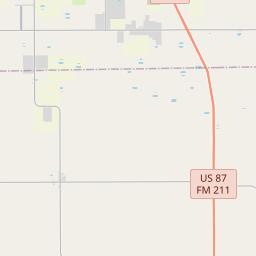Wilson Mercantile Company
Historical marker location:






Founded 1910 by William Green, son of a family who settled in South Texas more than a century ago. The townsite was part of four leagues of Wilson County school lands bought 1906 by Green and Associates. Green later bought out his associates, and shortly thereafter he and Lonnie Lumsden acquired over 50 sections of the old Dixie Ranch in the north part of Lynn County. Their ranching headquarters were a mile east of here. Green introduced farming on the school lands, bringing in settlers (many from his home county, Lavaca)-- some as purchasers, some as tenants. The community was called Wilson, for the original tract, and indirectly for Rev. J. C. Wilson, State Senator for whom Wilson County was named. The town was founded 1911, after Green influenced Panhandle & Santa Fe Railway to put its line here. Green's original frame mercantile store, nucleus for the town, was replaced in 1917 by this building. In 1963 Wilson
Mercantile was restored by Mrs. William Dickson Green, daughter-in-law of
founder; her work has made the building a repository for items authentic to the
period when the Greens came to Texas as well as to the era when town of Wilson
was established and the store was founded. Recorded Texas Historic Landmark - 1967
As one of the most visible programs of the Texas Historical Commission (THC), historical markers commemorate diverse topics in Texas history, including: the history and architecture of houses, commercial and public buildings, religious congregations, and military sites; events that changed the course of local and state history; and individuals who have made lasting contributions to the state, community organizations, and businesses.
The first domed stadium in the world, the Astrodome, was built in Houston in 1965 and hosted numerous sporting events and concerts over the years.
The first European Americans to arrive in the area were primarily cattle ranchers and farmers. In 1876, the Texas legislature established Lynn County, which was named in honor of Judge John W. Lynn, who served as secretary of state during the Republic of Texas era. The county was officially organized in 1903, with Tahoka as its county seat.
The early years of Lynn County were characterized by the development of agriculture and cattle ranching. The region's fertile soil and ample water supply allowed farmers to grow various crops, including cotton, corn, sorghum, and wheat. Cattle ranching also played a significant role in the county's economy, with many ranchers utilizing the open range to graze their herds.
Over time, Lynn County grew and prospered. The discovery of oil in the early 20th century brought new economic opportunities, attracting both workers and businesses to the area. Oil-related industries developed, and the county experienced a period of growth and prosperity.
Today, Lynn County continues to be known for its agriculture, oil production, and close-knit communities. The county's residents embrace their rich history while also adapting to modern advancements and industries. With its scenic landscapes, small-town charm, and thriving agricultural sector, Lynn County remains an important part of West Texas's heritage.
Lynn County Timeline
This timeline provides a glimpse into the major events and milestones that have shaped the history of Lynn County, Texas.
- 1876: Lynn County is established and named after Judge William Lynn.
- 1880: The town of Tahoka is founded as the county seat.
- 1902: The Santa Fe Railroad extends its line to Tahoka, boosting the local economy.
- 1930s: Lynn County faces challenges due to the Dust Bowl and the Great Depression.
- 1940s: Oil and gas discoveries lead to economic growth and increased population.
- 1970s: Lynn County experiences an agricultural boom, with cotton becoming a major crop.
- 1990s: The Lynn County Courthouse is restored, preserving the county's historical architecture.
- 2010s: Lynn County continues to be an agricultural hub, with farming and ranching as the main industries.